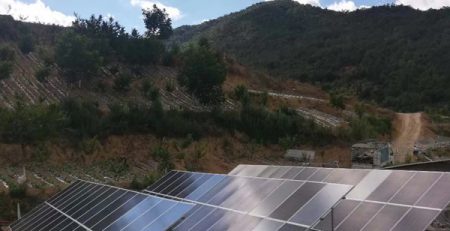LA CAPACIDAD SOLAR PODRÍA DISPARARSE CON TRANSPORTE ELECTRIFICADO Y CALEFACCIÓN
With wide adoption of electric vehicles and heat pumps, La red de menor costo de Colorado alcanzaría 21 GW de capacidad solar, 12 GW de viento, y 7 GW de almacenamiento por 2040, mientras que las tarifas eléctricas bajarían. These modeling results apply to other states as well.
Electrifying most transportation and heating in Colorado would allow more low-cost renewables on the grid, thus lowering the cost per kilowatt-hour for all consumers in the state, and accelerating achievement of Colorado’s carbon reduction goals.
Solar capacity in Colorado (shown in red above) would soar to about 15 GW by 2030 y 21 GW by 2040, in an “electrification and decarbonization” scenario modeled by Vibrant Clean Energy, using its WIS:dom energy grid model. Also by 2040, storage with 8 hour duration would reach 7.4 GW (shown in yellow), and wind power would reach 12 GW (shown in green). The study was commissioned by Community Energy.
High levels of solar, wind and storage were facilitated in the model by flexible scheduling of both electric vehicle charging and heat pump operation. Flexible charging for vehicles was constrained to maintain round-trip commuting range, while flexible heat pump operation was constrained to keep building indoor temperatures within 1 degree of 72ºF. The modeling assumed that owners of electric vehicles and heat pumps would participate in flexible scheduling for a compensation of six cents per kWh.
Buildings were also modeled as having backup heating—either supplemental gas or electric heating—because air-source heat pumps lose efficiency on the very coldest days.


